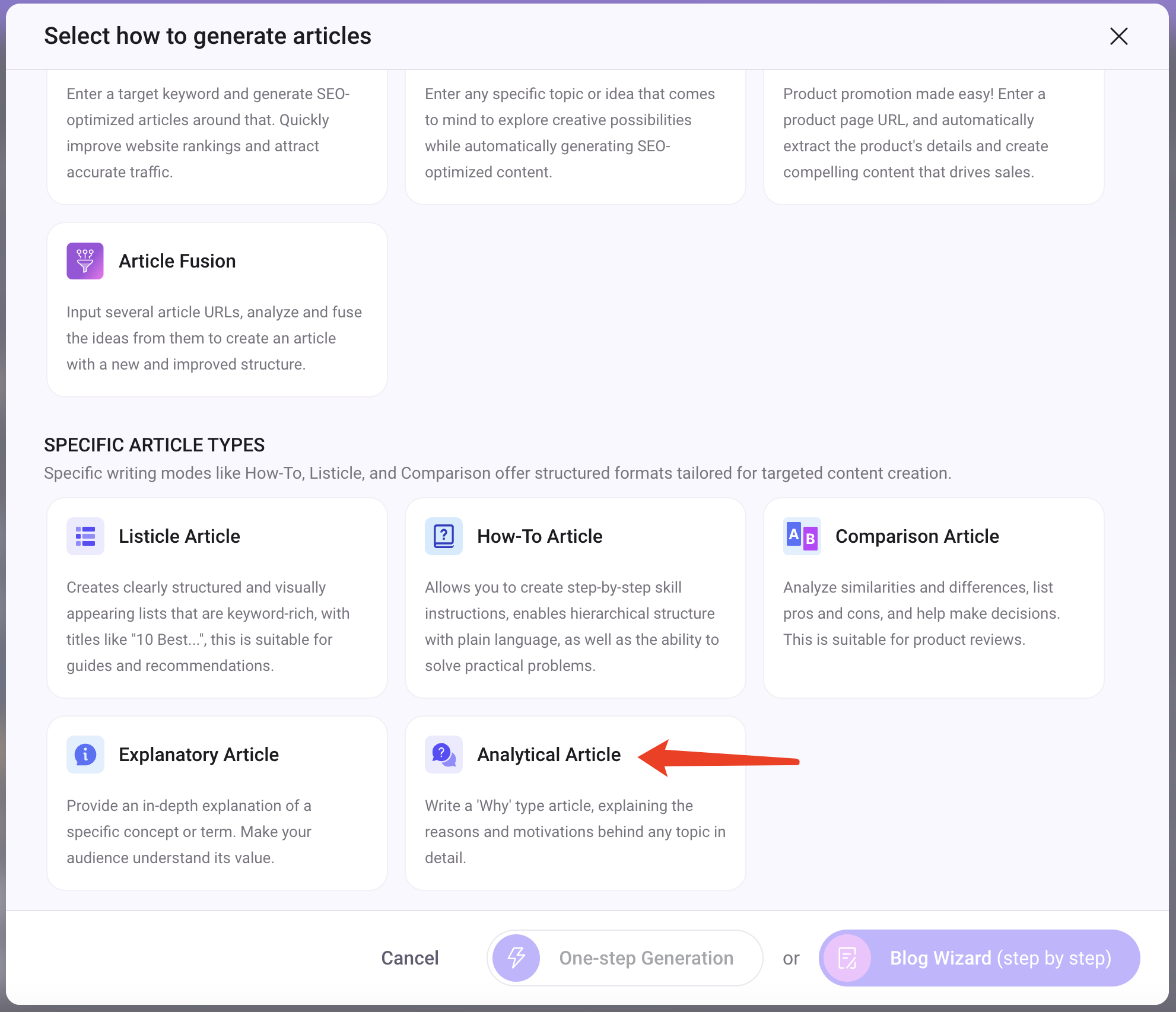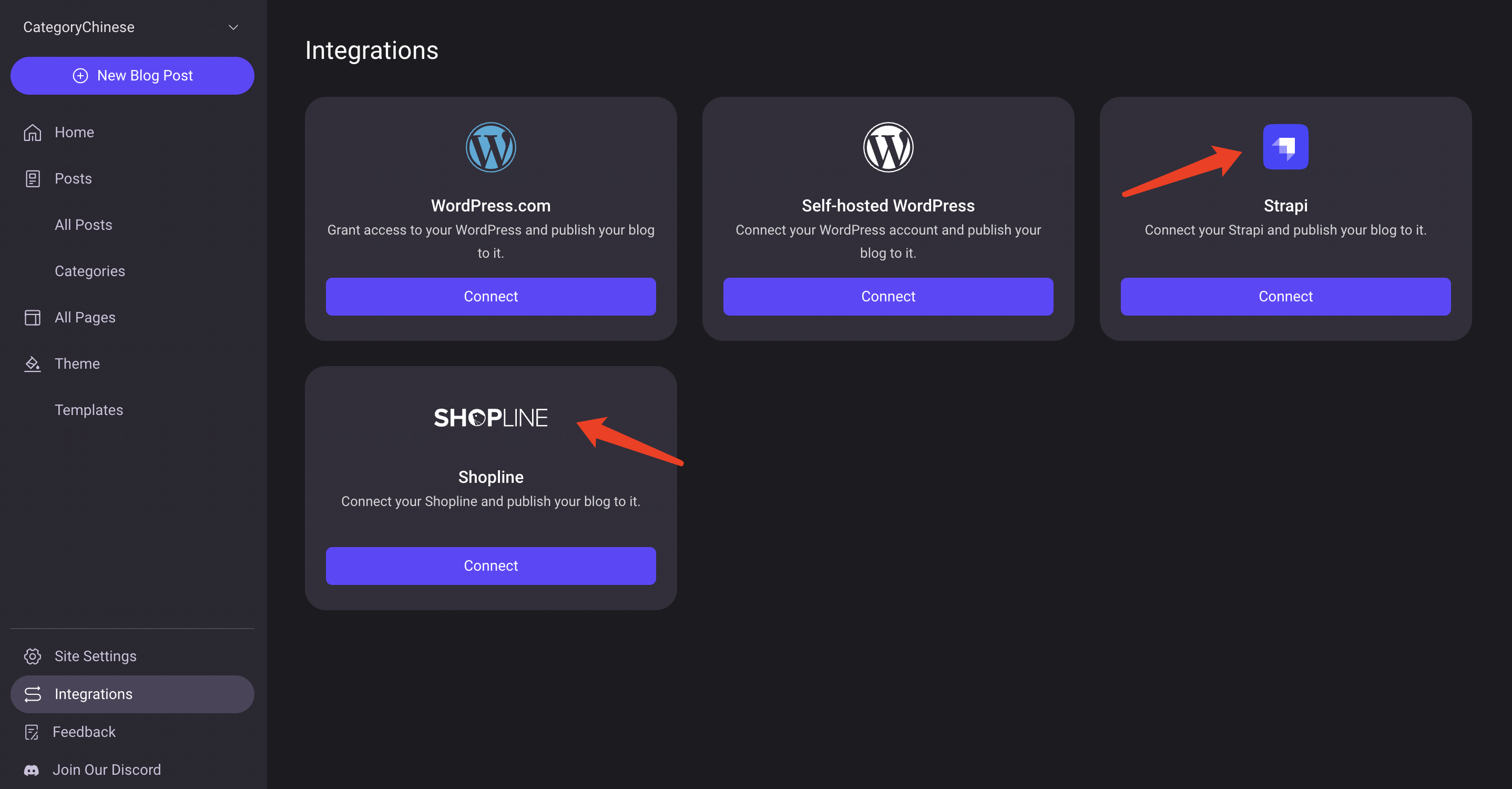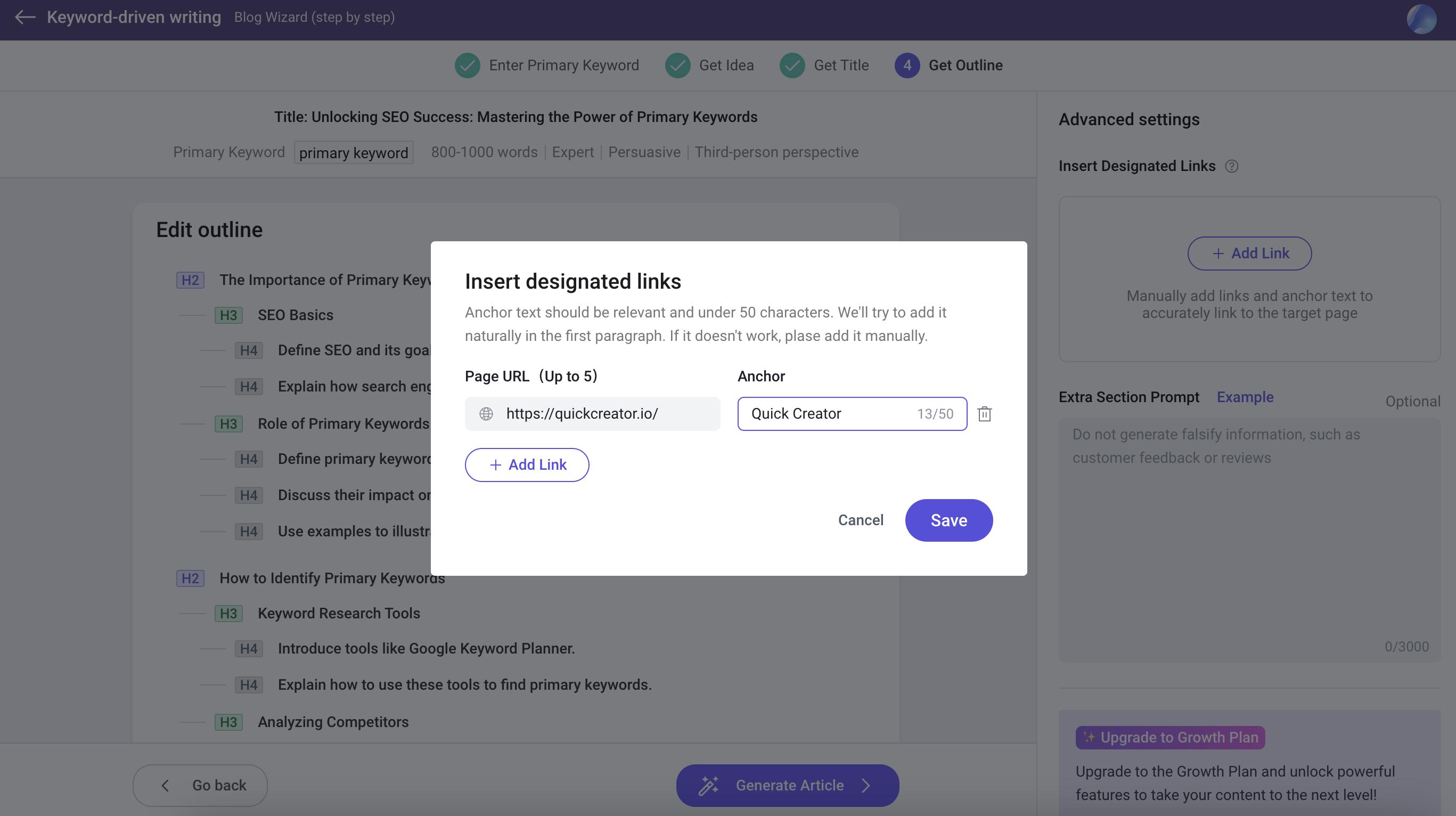QuickCreator's Article Generation Wizard has been significantly upgraded, bringing you a more convenient and intelligent writing experience!

Clearer progress prompts have been incorporated throughout the process to make it easier for users to understand the steps involved.





Experience the new and improved QuickCreator Article Generation Wizard and embark on a more efficient and intelligent writing journey!
We are excited to announce that QuickCreator AI Blogging Platform now comprehensively uses GPT-4o for all article generation tasks, ensuring higher quality and more stable content creation.
To better address the current issues with the internal and external linking functionality, we have implemented the following optimizations:
We are excited to announce the upcoming release of new optimizations for generating Page Meta Information in QuickCreator Blog Wizard. Here are the key updates:
We believe these updates to QuickCreator Blog Wizard will provide you with a better user experience and improved results. Thank you for your continued support!
Optimize the title generation process to make the generated titles more consistent with the best practices in search results
The Blog Wizard now uses high-quality reference articles and an automatic validation mechanism to generate more logical, detailed, and relevant blog outlines.
Users now have the ability to block specific domains from appearing in generated articles. You can add domains to the blacklist after an article is created, or proactively manage the blacklist to ensure unwanted domain links are always excluded.


The logic for generating blog titles has received a major upgrade!


This update focuses on a comprehensive upgrade to the blog generation feature from Product URL(aka Product Promotion). Our goal is to enhance user experience and improve the quality of the generated content. Here are the details of the update:




1. We offer a new post type: Analytical Article. This type of article is used to analyze the motivations and reasons behind things.

2. Two new integrations have been added: Strapi and Shopline. Now you can export article content to them.

As there are more and more integrations, we have made the following adjustments to the entrance for exporting articles to integrations.
In the editor, you can click the "Export" button in the upper right corner:

In the post list, you can click More -> Export:

Manually add internal links and anchor text to accurately link to the target page to effectively promote products, activities and various resources.




For a clearer writing experience, Blog Writer 2.0 now offers two distinct ways to start writing.
From Primary Keyword 2.0: Generate blogs content based on your primary keyword.
From Topic: Generate blogs with content based on a chosen topic, helping you explore new ideas and broaden the scope of your content.
The How-To functionality has been upgraded to version 2.0, providing clearer and more detailed steps for creating comprehensive guides.

User Interface Optimization: The interface has been refined to be more concise and intuitive, offering a smoother and more user-friendly experience.